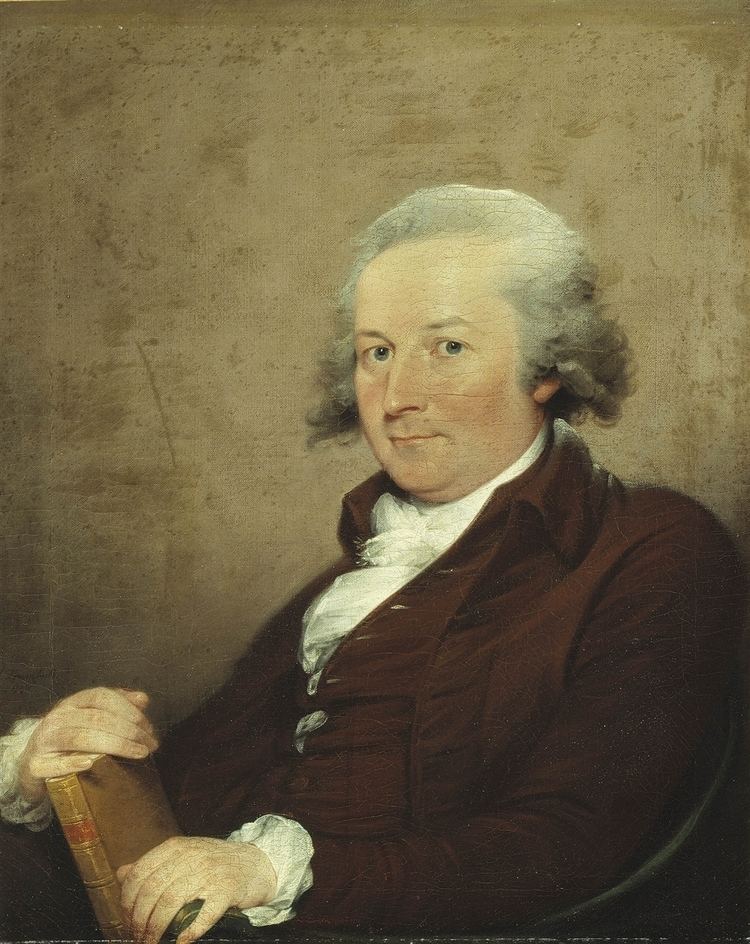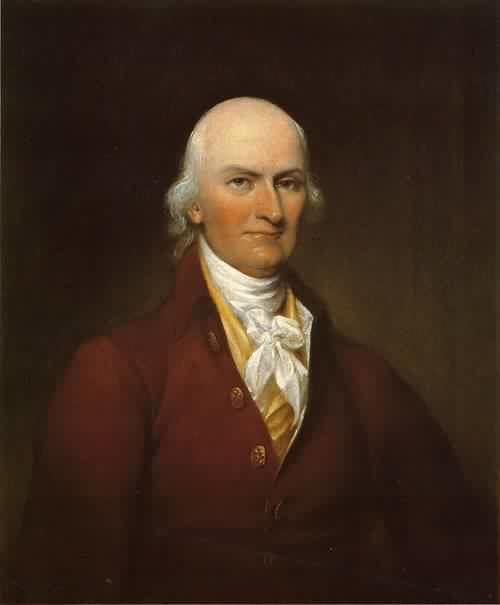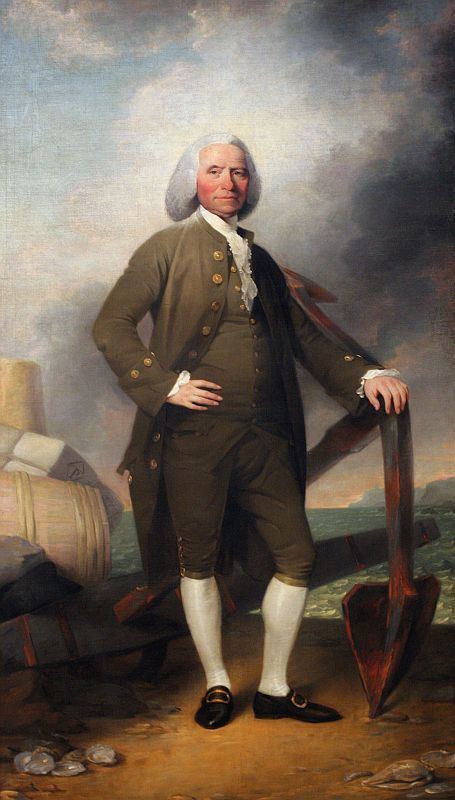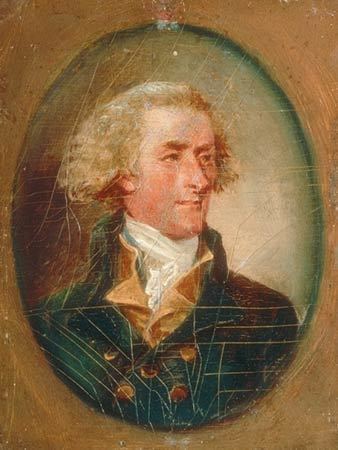Nationality American Education Harvard University Parents Jonathan Trumbull | Name John Trumbull Siblings Jonathan Trumbull, Jr. Role Artist | |
 | ||
Artwork Trumbull's Declaration of Indepe, Surrender of Lord Cornwallis, The Death of General Warren at, Surrender of General Burgoyne, The Sortie Made by the Garris Similar People Jonathan Trumbull, Charles Willson Peale, Jonathan Trumbull - Jr, John Singleton Copley, John Pitcairn | ||
John trumbull
John Trumbull (June 6, 1756 – November 10, 1843) was an American artist during the period of the American Revolutionary War and was notable for his historical paintings. He has been called "The Painter of the Revolution". His Declaration of Independence (1817) was used on the reverse of the commemorative bicentennial two-dollar bill.
Contents
- John trumbull
- Lecture 8 john trumbull and historical fiction the battle of bunker s hill june 17 1775 1786
- Early life
- Revolutionary War
- Postwar years
- Middle years
- Later years
- Legacy and honors
- Paintings
- In popular culture
- References

Lecture 8 john trumbull and historical fiction the battle of bunker s hill june 17 1775 1786
Early life

Trumbull was born in Lebanon, Connecticut, in 1756, to Jonathan Trumbull and his wife Faith (née Robinson) Trumbull. His father served as Governor of Connecticut from 1769 to 1784. Both sides of his family were descended from early Puritan settlers in the state.

The young Trumbull entered the 1771 junior class at Harvard College at age fifteen and graduated in 1773. Due to a childhood accident, Trumbull lost use of one eye, which may have influenced his detailed painting style.
Revolutionary War

As a soldier in the American Revolutionary War, Trumbull rendered a particular service at Boston by sketching plans of the British works. He witnessed the Battle of Bunker Hill. He was appointed second personal aide to General George Washington, and in June 1776, deputy adjutant-general to General Horatio Gates. He resigned from the army in 1777 after a dispute over the dating of his officer commission.

In 1780, with funds depleted, Trumbull turned to art as a profession. He traveled to London, where upon introduction from Benjamin Franklin, Trumbull studied under Benjamin West. At West's suggestion, Trumbull painted small pictures of the War of Independence and miniature portraits. He painted about 250 in his lifetime.

On September 23, 1780, British agent Major John André was captured by Continental troops in North America; he was hanged as a spy on October 2, 1780. After news reached Great Britain, outrage flared and Trumbull was arrested, as having been an officer in the Continental Army of similar rank to André. He was imprisoned for seven months in London's Tothill Fields Bridewell.
Postwar years
After being released, Trumbull returned to the United States. In 1784, following the British recognition of the United States' independence, he returned to London for painting study under West. While working in his studio, Trumbull painted Battle of Bunker Hill and Death of General Montgomery in the Attack on Quebec. Both works are now in the Yale University Art Gallery.
In 1785 Trumbull went to Paris, where he made portrait sketches of French officers for the Surrender of Lord Cornwallis. With the assistance of Thomas Jefferson, serving there as the US minister, Trumbull began Declaration of Independence. Over the next 5 years Trumbull painted small portraits of signers that he would later use to piece together the larger painting. If the signer was deceased, a previous portrait would be copied as was the case with Arthur Middleton whose head position stands out in the painting. While visiting with each signer or their family Trumbull, always looking for funding, used the occasion to sell subscriptions to his to be produced engravings of his paintings of the American Revolution.
While in Paris, Trumbull is credited with having introduced Jefferson to the Italian painter Maria Cosway; they became lifelong intimate friends. Trumbull's painting became widely known due to a later engraving of it by Asher Brown Durand, which was reproduced.
This Independence painting was purchased by the United States Congress, along with his Surrender of General Burgoyne, Surrender of Lord Cornwallis, and Washington Resigning his Commission, all related to the Revolution. All now hang in rotunda of the United States Capitol. Congress reportedly authorized only funds sufficient to purchase these four paintings.
Trumbull completed other paintings related to the Revolution: Death of General Warren at the Battle of Bunker's Hill (one version is held by the Boston Museum of Fine Arts); Death of General Montgomery at Quebec; Capture of the Hessians at Trenton; Death of General Mercer at the Battle of Princeton. Trumbull's The Sortie Made by the Garrison of Gibraltar, 1789, owned by the Boston Athenaeum, is now held by the Metropolitan Museum of Art in New York City.
Middle years
In 1831 Trumbull, after failing to sell his paintings individually and falling on hard times financially, sold a series of 28 paintings and 60 miniature portraits to Yale University for an annuity of $1,000. After many years of trying to create income from his painting he had finally found a way to sustain himself from his art. This is by far the largest single collection of his works. The collection was originally housed in a neoclassical art gallery designed by Trumbull on Yale's Old Campus, along with portraits by other artists.
His portraits include full lengths of General Washington (1790) and George Clinton (1791), in New York City Hall. New York also bought his full-length paintings of Alexander Hamilton (1805, the source of the face on the $10 bill) and John Jay. In 1791 he was elected a Fellow of the American Academy of Arts and Sciences.
He painted portraits of John Adams (1797), Jonathan Trumbull, and Rufus King (1800); Timothy Dwight and Stephen Van Rensselaer (both at Yale), Alexander Hamilton (one in the Metropolitan Museum of Art and one in the Boston Museum of Fine Arts, both taken from Ceracchi's bust), a self-portrait (1833), a full-length of Washington, held at Charleston, South Carolina; a full-length of Washington in uniform, General George Washington at Trenton, (1792, at Yale); and portraits of President and Mrs. Washington (1794), in the National Museum of American History.
Trumbull was painted by Gilbert Stuart and many others.
In 1794 Trumbull acted as secretary to John Jay in London during the negotiation of the treaty with Great Britain, which largely settled the boundary with Canada and began cotton export. In 1796 he was appointed by the commissioners sent by the two countries as the fifth member of a commission charged with carrying out the seventh article of the Jay Treaty, which mediated claims by American and British merchants and the opposing government stemming from actions which occurred during the war. Shortly after the end of Trumbull's service on this commission he traveled to Stuttgart to pick up the completed engraving of the Battle of Bunker's Hill. On the return trip he passed through Paris and carried the first dispatch from the XYZ Affair out of France.
Later years
Trumbull was appointed president of the American Academy of the Fine Arts in New York City, serving for twenty years, from 1816 to 1836. Emphasizing classical traditions, Trumbull did not get along with the students. At the same time, his painting skills declined. In 1825 many of the students withdrew, founding the National Academy of Design. Unable to accommodate to changing tastes, the American Academy later closed in 1839 after a second fire destroyed its collections.
Trumbull wrote his autobiography, which he published in 1841. He died in New York City at the age of 87 on November 10, 1843.
Legacy and honors
Paintings
In popular culture
Trumbull's painting The Declaration of Independence is mentioned in the opening track of The Hamilton Mixtape recorded by The Roots based on work by Lin-Manuel Miranda called "No John Trumbull - Intro." The song plays on the fact that the Founding Fathers look as if standing patiently in a line, saying that "the reality is messier and richer."
